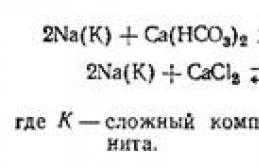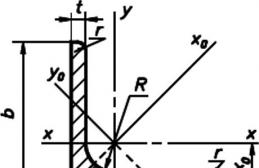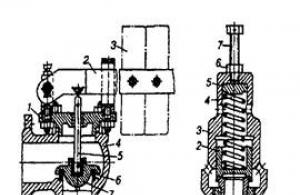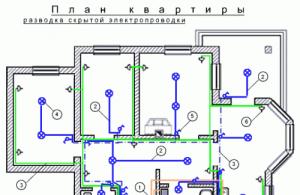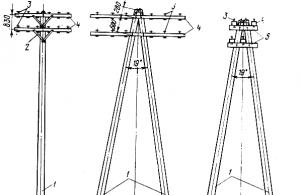Electrovacuum devices include electrical devices, the operation of which is based on the use of a flow of electric charges in a vacuum or in a rarefied gas environment.
Vacuum refers to the state of a gas, in particular air, at a pressure below atmospheric. If electrons move freely in space, without colliding with the molecules remaining after pumping out the gas, then
They talk about high vacuum.
Electrovacuum devices are divided into electronic, in which the flow of electric current in a vacuum is observed, and ionic (gas-discharge) devices, which are characterized by an electric discharge in gas (or vapor). In electronic devices, ionization is practically absent, and the gas pressure is at least 100 μPa (10-6-10-7 mm Hg).
In ion devices, the pressure is 133 × 10-3 Pa (10-3 mm Hg) and higher. At
In this case, a significant part of the moving electrons collides with gas molecules and ionizes them.
Electronic devices are called vacuum tubes.
Electronic devices are classified according to the following criteria:
Purpose and scope,
Number of electrodes
Type of cathode (direct or indirect filament),
Electron flow control method.
Electronic devices are divided into:
1. Rectifier lamps (kenotrons) designed for converting
converting alternating current into direct current.
2. Receiving and amplifying lamps designed to amplify and convert
formation of high frequency oscillations in receivers and to improve the oscillation
low frequency bans in receivers and amplifiers.
Depending on the number of electrodes, receiving and amplifying lamps are divided into:
Two-electrode (diodes), having two electrodes - a cathode and an anode (diodes are used for detecting (rectifying) high-frequency currents, converting low-frequency currents and various automatic control
Three-electrode (triodes), having, in addition to the cathode and anode, a third electrode, a control grid (triodes are used to amplify low-frequency oscillations and in many special circuits);
Four-electrode (tetrodes), having a cathode, an anode and two grids (tetrodes are used to powerfully amplify low-frequency oscillations);
Five-electrode (pentodes), having a cathode, an anode, and three grids (pentodes are used to amplify high and low frequency oscillations, powerful pentodes are used to amplify the power of low frequency oscillations);
Multielectrode (four grids - hexodes, five grids - heptodes, six grids - octodes) are used for frequency conversion in receivers;
Combined, containing two or more systems of electrodes with independent
flows of electrons. The following types of combined vacuum tubes are distinguished: double diode, double triode, double tetrode, double
diode - triode, double diode - tetrode, diode - tetrode, diode - pentode, double
diode - pentode, triode - pentode, double beam tetrode, etc.
3. Generator and modulator tubes. These lamps are more powerful than receiving and amplifier lamps. They are used to generate high-frequency oscillations, amplify these oscillations in power, and for modulation.
Generator and modulator lamps are three-electrode, four-
electrode and five-electrode.
4. Ultra-high-frequency lamps designed specifically for operation in the ultra-short wave (VHF) range. Some of these lamps operate on the same principle as conventional lamps and differ from them only in size. Another part of the VHF lamps has a special design. Finally,
In the VHF range, klystrons and magnetrons are used, the operation of which is based on completely different principles than the operation of a conventional electron tube.
Rice. 1.1 Appearance of some types of lamps:
a and b – receiving and amplifying glass lamps; c – baseless mini-
turn lamp; d – metal receiving and amplifying lamp; d –
high power glass baseless lamp; e - metal ceramics -
ical pulse
5. Electron beam devices. These include kinescopes (television receiving tubes), transmitting television tubes, oscillographic and storage tubes, electro-optical image converters, cathode ray switches, indicator tubes of radar and hydroacoustic stations, etc.
The appearance of some types of lamps is shown in Fig. 1.1.
Electrovacuum devices are also classified:
1. According to the material and design of the cylinder:
Glass;
Metal;
Ceramic;
Combined.
2. By type of cooling:
Natural, or radiant;
Forced - air, water, steam.
Classification of gas-discharge devices is made according to the type of discharge occurring in the gas. Three types of gas-discharge devices are used in radio equipment:
a) Glow discharge devices. These devices have a cold, non-heated
cathode and is used primarily for voltage stabilization.
b) Arc discharge devices with a liquid or solid non-heated cathode.
c) Arc discharge devices with an artificially heated cathode. These devices are used to rectify alternating current into direct current and
various control and automation schemes.
Electrovacuum devices (EVP)
devices for generating, amplifying and converting electromagnetic energy, in which the working space is freed from air and protected from the surrounding atmosphere by a rigid gas-tight shell. EVPs include incandescent lamps (See Incandescent lamp) ,
vacuum Electronic devices (in which the flow of electrons passes in a vacuum), gas-discharge electronic devices (in which the flow of electrons passes in a gas). Incandescent lamps are the most widespread type of electronic light bulbs (in the 70s of the 20th century, the annual global production was about 10 billion units). Removing air from the lamp cylinder prevents oxygen from oxidizing the filament. To reduce the evaporation of the filament, some types of incandescent lamps are filled with an inert gas after removing the air. This allows you to increase the operating temperature of the filament and thereby the luminous efficiency of the lamps without changing their service life. The presence of an inert gas does not affect the process of converting electrical energy supplied to the lamp into light. Vacuum electronic devices are manufactured in such a way that in operating mode the pressure of the residual gases inside the cylinder is 10 -6 -10 -10 mmHg Art. At this degree of rarefaction, residual gas ions do not affect the trajectories of electrons and the noise created by the flow of these ions as they move towards the cathode is quite small. Such EVPs cover the following classes of devices. 1) Vacuum tubes (See Vacuum tube) -
Triodes, Tetrodes, Pentodes, etc.; designed to convert direct current energy into the energy of electrical vibrations with a frequency of up to 3․10 9 Hz. The main areas of application of vacuum tubes are radio engineering, radio communications, radio broadcasting, and television. 2) EVP microwave - Magnetrons and Magnetron-type devices ,
transmission and reflection Klystrons, traveling wave tubes (See Traveling wave tube) and backward wave tubes (See Backward wave tube)
etc.; designed to convert direct current energy into the energy of electromagnetic oscillations with frequencies from 3․10 8 to 3․10 12 Hz. Microwave EVPs are used mainly in radar devices, television (for transmitting television signals via radio relay communication lines, satellite lines), microwave radio communications, and telecontrol (for example, satellites and spacecraft). 3) Electron beam devices -
oscillographic cathode ray tubes (See Oscillographic cathode ray tube), picture tubes, storage cathode ray tubes (See Storage cathode ray tube), etc.; are intended for various types of transformations of information presented in the form of electrical or light signals (for example, visualization of electrical signals, conversion of a two-dimensional optical image into a sequence of television signals and vice versa). 4) Photoelectronic devices - transmitting television tubes (See Transmitting television tube), photomultiplier tubes (See Photomultiplier tube) ,
vacuum photocells ;
serve to convert optical radiation into electric current and are used in automation devices, television, astronomy, nuclear physics, sound cinema, fax communications, etc. 5) Vacuum indicators - electron light indicators (See Electron light indicator), digital indicator lamps (See . Digital indicator lamp), etc. The operation of indicator lamps is based on the conversion of direct current energy into light energy. Used in measuring instruments, information display devices, radio receivers, etc. 6) X-ray tubes (See X-ray tube) ;
convert direct current energy into x-rays. Used: in medicine - for diagnosing a number of diseases; in industry - to detect invisible internal defects in various products; in physics and chemistry - to determine the structure and parameters of crystal lattices of solids, the chemical composition of matter, the structure of organic substances; in biology - to determine the structure of complex molecules. R. F. Kovalenko.
Great Soviet Encyclopedia. - M.: Soviet Encyclopedia. 1969-1978 .
See what “Electrovacuum devices” are in other dictionaries:
Devices in which current is transferred by electrons or ions moving between electrodes through a high vacuum or gas inside a gas-tight shell. Electronic devices are divided into two large classes: electronic devices and ion devices. IN… … Physical encyclopedia
- (EVP) are used for various types of transformations of electromagnetic energy (generation, amplification, etc.). EVPs include: vacuum electronic devices (electron tubes, magnetrons, klystrons, cathode ray devices, X-ray tubes, etc... Big Encyclopedic Dictionary
- (EVP), electronic devices in which the working space is freed from air and protected from the surrounding atmosphere by a gas-tight (vacuum-tight) shell. The work is based on the interaction of the flow of electrons emitted by the cathode with... ... Modern encyclopedia
Devices whose operating principle is determined by the movement of electrons in a high vacuum. Electrical products include electronic tubes (rectifier, generator, amplifier, mixing, indicator, etc.), microwave electronic devices (klystron, magnetron, ... ... Physical encyclopedia
ELECTRIC VACUUM DEVICES- electrical devices in which the electric current is caused by an electron flow moving in a high vacuum (see (1)). E. items include: electronic tubes (rectifier, generator, amplifier, mixing, indicator, etc.), ... ... Big Polytechnic Encyclopedia
- (EVP), serve for various types of transformations of electromagnetic energy (generation, amplification, etc.). EVPs include: vacuum electronic devices (electron tubes, magnetrons, klystrons, cathode ray devices, X-ray tubes... ... encyclopedic Dictionary
- (EVP), electronic devices in which the working space is freed from air and protected from the environment by a gas-tight (vacuum-tight) shell. Serve for various types of transformations of electromagnetic energy (generation,... ... Encyclopedia of technology
- (EVP) electronic devices, in which the working space is freed from air (residual gas pressure is usually not higher than 100 μPa) and protected from the surrounding atmosphere by a gas-tight (vacuum-tight) shell; work basic on interaction... ... Big Encyclopedic Polytechnic Dictionary
- (EVP), used for decomposition. kind of transformations el. mag. energy (generation, amplification, etc.). EVPs include: vacuum electronic devices (electron tubes, magnetrons, klystrons, cathode ray devices, X-ray tubes, etc.),… … Natural science. encyclopedic Dictionary
An electrovacuum device is a device designed to generate, amplify and convert electromagnetic energy, in which the working space is freed from air and protected from the surrounding atmosphere by an impenetrable shell. These... ...Wikipedia
Books
- Electronics. Textbook for bachelors, Shishkin G.G. , The textbook covers all sections of modern electronics. Semiconductor and electrovacuum devices of ultra-high frequencies with dynamic control, gas-discharge devices,... Category:

Electrovacuum devices are devices for converting, amplifying and generating electromagnetic energy, in which the working space is isolated from air and protected from the surrounding atmosphere by a rigid gas-tight shell.
Electrovacuum devices include gas-discharge electronic devices, in which the flow of electrons passes in a gas, vacuum electronic devices, in which the flow of electrons passes in a vacuum, and incandescent lamps.
Incandescent lamps are the most common type of electric vacuum devices. Removing air from the lamp cylinder prevents oxygen from oxidizing the filament. After removing air to reduce evaporation of the hot filament, some types of incandescent lamps are filled with inert gas. This makes it possible to increase the operating temperature of the filament, thereby increasing the luminous efficiency of the lamps without reducing their service life. The presence of an inert gas does not affect the conversion of electrical energy supplied to the lamp into light. Vacuum electronic devices are manufactured in such a way that in operating mode the pressure of residual gases inside the cylinder is equal to 10-6-KG10 mmHg. Art.
Ions of residual gases at a given degree of rarefaction do not affect the trajectories of electrons and the noise that is created by the flow of such ions as they approach the cathode is relatively small. Such electrovacuum devices cover several classes of devices.
1. Electronic tubes - pentodes, tetrodes, triodes, etc.; necessary to convert direct current energy into the energy of electrical vibrations with a frequency of up to 3 x 109 Hz. The main areas of use of vacuum tubes are radio broadcasting, radio engineering, radio communications, and television.
2. Electrovacuum microwave devices - magnetrons and magnetron-type devices, reflective and transit klystrons, backward wave lamps and traveling wave lamps, etc.; are designed to convert direct current energy into the energy of electromagnetic oscillations with frequencies ranging from 3 x 108 to 3 x 1012 Hz. Electrovacuum microwave devices are used mainly in radar and television devices for transmitting television signals via radio relay communication lines, microwave radio communication, and satellite lines.
3. Cathode ray devices - oscillographic cathode ray tubes, storage cathode ray tubes, picture tubes, etc.; are intended for various transformations of information presented in the form of light or electrical signals (for example, visual display of electrical signals, conversion of a two-dimensional optical image into a sequence of television signals and vice versa).
4. Photoelectronic devices - transmitting television tubes, vacuum photocells, photomultipliers; serve to convert optical radiation into electric current and are used in automation devices, nuclear physics, television, astronomy, sound cinema, fax communications, etc.
5. Vacuum indicators - digital indicator lamps, electronic light indicators, etc. The operation of indicator lamps is based on the conversion of direct current energy into light energy. Used in radio receivers, information display devices, measuring instruments, etc.
6. X-ray tubes; convert direct current energy into x-rays. Used: in medicine - for diagnosing a number of diseases; in industry - to find invisible internal defects in various products; in chemistry and physics - to determine the structure of organic substances, the chemical composition of matter, parameters and structure of crystal lattices of solids; in biology - to determine the structure of complex molecules.
In gas-discharge electronic devices, the gas pressure is, as a rule, much lower than atmospheric pressure, which is why they are classified as electric vacuum devices. The class of gas-discharge electric vacuum devices covers several types of devices.
1. High power ion devices up to several megawatts at currents up to a thousand amperes, the action of which is based on the neutralization of the space charge by gas ions. Similar electric vacuum devices include mercury valves used to convert alternating current into direct current in industry, railway transport and other industries; pulsed hydrogen ta-sitrons and thyratrons, designed to convert direct current into pulsed current in devices for electric spark processing of metals, radar, etc.; clipper devices and spark gaps used to protect equipment from overvoltages.
2. Gas-discharge light sources of continuous radiation, used for lighting rooms, streets, in film equipment, illuminated advertisements, etc., and pulsed light sources, used in telemechanics and automation devices, information transmission, optical location, etc.
3. Gas-discharge indicators (matrix, sign, linear, signal), designed for visual reproduction of information in computers and other devices.
4. Quantum gas-discharge devices that convert direct current energy into coherent radiation - gas lasers, quantum frequency standards.
Modern vacuum devices owe their appearance to the American inventor Thomas Edison. It was he who developed the first successful method of lighting, using an electric light bulb.
History of the lamp
Nowadays it is hard to believe that electricity did not exist in all historical periods. The first incandescent light bulbs appeared only at the end of the nineteenth century. Edison managed to develop a model of a light bulb that contained carbon, platinum, and bamboo filaments. It is this scientist who is rightly called the “father” of the modern light bulb. He simplified the light bulb circuit and significantly reduced the cost of production. As a result, not gas, but electric lighting appeared on the streets, and new lighting devices began to be called Edison lamps. Thomas worked for a long time to improve his invention, as a result, the use of candles became an unprofitable undertaking.
Principle of operation
What device do Edison incandescent light bulbs have? Each device has a filament body, a glass bulb, a main contact, electrodes, and a base. Each of them has its own functional purpose.
The essence of the operation of this device is as follows. When a filament body is strongly heated by a stream of charged particles, electrical energy is converted into light.
In order for the radiation to be perceived by the human eye, it is necessary to reach a temperature of at least 580 degrees.
Among metals, tungsten has the maximum melting point, so it is from it that the filament body is made. To reduce the volume, the wire began to be arranged in a spiral.
Despite the high chemical resistance of tungsten, for its maximum protection from the corrosion process, the filament body is placed in a sealed glass vessel from which air has been previously pumped out. Instead, an inert gas is pumped into the flask, which prevents the tungsten wire from entering into oxidation reactions. Argon is most often used as an inert gas, sometimes nitrogen or krypton is used.

The essence of Edison's invention is that the evaporation that occurs during prolonged heating of the metal is prevented by the pressure created by the inert gas.
Lamp Features
There are quite a few different lamps designed to illuminate a large area. The peculiarity of Edison's invention is the ability to adjust the power of this device taking into account the illuminated area.
Manufacturers offer different types of lamps, differing in service life, size, and power. Let's look at some types of these electrical appliances.
The most common vacuum tubes are LON. They fully comply with hygienic requirements, and their average service life is 1000 hours.
Among the disadvantages of general-purpose lamps, we highlight the low Approximately 5 percent of electrical energy turns into light, the rest is released in the form of heat.

Spotlight lamps
They have a fairly high power and are designed to illuminate large areas. Electrovacuum devices are divided into three groups:
- film projection;
- lighthouses;
- general purpose.
The floodlight light source differs in the length of the filament body; it has more compact dimensions, which makes it possible to increase the overall brightness and improve the focusing of the light flow.
Mirror electric vacuum devices have a reflective aluminum layer and a different bulb design.
The part of it that is intended to conduct light is made of frosted glass. This allows you to make the light soft and reduce contrasting shadows from various objects. Such electrovacuum devices are used for interior lighting.

Inside the halogen flask there are bromine or iodine compounds. Thanks to their ability to withstand temperatures up to 3000 K, the lamps have a service life of about 2000 hours. But this source also has its drawbacks, for example, a halogen lamp has low electrical resistance when cooling.
Main settings
In an Edison incandescent lamp, the tungsten filament is arranged in different shapes. For stable operation of such a device, a voltage of 220 V is required. On average, its service life ranges from 3000 to 3500 hours. Considering that the color temperature is 2700 K, the lamp provides a white warm or yellow spectrum. Currently, lamps are offered in different sizes (E27). If desired, you can choose a lamp in the form of a hairpin, herringbone, or spiral for a ceiling chandelier or wall lighting fixture.
Edison's invention is divided into separate classes according to the number of tungsten filaments. The cost of the lighting device, its power, and service life directly depend on this indicator.
Operating principle of EVL
Thermionic emission consists of the emission of electrons by a heated filament body into a vacuum or inert environment created inside the bulb. A magnetic or electric field is used to control the flow of electrons.

Thermionic emission makes it possible to practically use the positive qualities of the electron flow - to generate and amplify electrical oscillations of various frequencies.
Features of radio tubes
The vacuum diode is the basis of radio engineering. The lamp design has two electrodes (cathode and anode) and a grid. The cathode provides emission; for this, a layer of tungsten is coated with barium or thorium. The anode is made in the form of a plate made of nickel, molybdenum, and graphite. The grid is a separator between the electrodes. When the working fluid is heated from moving particles, a powerful electric current is created in a vacuum. Electrovacuum devices of this type form the basis of radio engineering. In the second half of the last century, vacuum tubes were used in various areas of the technical and radio-electronic industries.
Without them it was impossible to manufacture radios, televisions, special equipment, and computers.
Areas of application
With the development of precision instrumentation and radio electronics, these lamps lost their relevance and ceased to be used on a large scale.
But even today there are industrial areas that require EVL, because only a vacuum lamp can ensure the operation of devices according to given parameters in a certain environment.

EVL are of particular interest to the military-industrial complex, since vacuum tubes are characterized by increased resistance to electromagnetic pulses.
One military apparatus can contain up to a hundred EVL. Most semiconductor materials and electronic electronics cannot function under increased radiation, as well as in conditions of natural vacuum (in space).
EVL contribute to increasing the reliability and durability of satellites and space rockets.
Conclusion
In electrovacuum devices that allow generating, amplifying, and converting electromagnetic energy, the working space is completely free of air, fenced off from the atmosphere by an impenetrable shell.
The discovery of thermionic emission led to the creation of a simple two-electrode lamp called a vacuum diode.
When it is connected to an electrical circuit, a current appears inside the device. When the polarity of the voltage changes, it disappears, regardless of how hot the cathode is. By maintaining a constant temperature of the heated cathode, it was possible to establish a direct relationship between the anode voltage and current strength. The results obtained began to be used in the development of electronic vacuum devices.

For example, a triode is an electron tube that has three electrodes: an anode, a thermionic cathode, and a control grid.
It was triodes that became the first devices used to amplify electrical signals at the beginning of the last century. Currently, triodes have been replaced by semiconductor transistors. Vacuum triodes are used only in those areas where it is necessary to convert high-power signals with a small number of active components, and the weight and dimensions can be neglected.
Powerful radio tubes are comparable to transistors in terms of efficiency and reliability, but their service life is much shorter. In low-power triodes, most of the filament goes to the cascade power consumption, sometimes its value reaches 50%.
Tetrodes are an electronic double-grid tube that is designed to increase the power and voltage of electrical signals. These devices have a higher gain compared to a triode. Such design features make it possible to use tetrodes to amplify low frequencies in televisions, receivers, and other radio equipment.
Consumers actively use incandescent lamps, in which the filament body is a tungsten spiral or wire. These devices have a power from 25 to 100 W, their service life is 2500-3000 hours. Manufacturers offer lamps with different bases, shapes, and sizes, so you can choose a lamp option taking into account the characteristics of the lighting device and the area of the room.
Electrovacuum devices.1. Electrovacuum are devices in which electrical conductivity is carried out by electrons or ions moving between electrodes through a vacuum or gas. Electrovacuum devices are divided into electronically controlled lamps, electron beam And gas discharge devices.
The basic structural elements of any electric vacuum device are electrodes placed inside a cylinder (gas-tight shell). The electrode of an electric vacuum device is a conductor that emits (emit) or collects electrons (ions) or controls their movement from electrode to electrode using an electric field. Depending on the purpose, the following electrodes of an electric vacuum device are distinguished: cathode, anode and control ones.
^ Cathode– is a source of electrons in an electric vacuum device.
Anode– accelerating electrode - usually serves as both the output electrode and the main collector (collector) of electrons.
Managers called an electrode designed to control the main flow of electrons. If the control electrode is made in the form of a grid, it is often called a control grid. Electrodes are made in the form of threads, flat plates, hollow cylinders and spirals; they are fixed inside the cylinder on special holders - traverses and mica or ceramic insulators. The ends of the holders are soldered into the glass base of the cylinder.
Cylinders Electrovacuum devices are gas-tight shells made of glass, metal or ceramics. In cylinders of electronically controlled lamps a vacuum of 10 -8 ... 10 -4 Pa is created, and in cylinders of gas-discharge devices - 10 -1 ... 10 4 Pa.
^
The world's first electrovacuum device
– the incandescent lamp was invented in 1873 by the Russian scientist A.N. Lodygin. In 1883, American inventor T.A. Edison discovered the effect of a one-way flow of electrons in a vacuum from a heated filament to a metal plate if a certain potential difference is applied to them, for example, by connecting it to a galvanic cell. This is how the prototype of the electron tube appeared. At that time, such a lamp could not find practical application, but work on studying its properties and the conditions for the passage of electrons in a vacuum continued.
^
2. Physical basis of the operation of electronically controlled lamps.
Electronically controlled lamp is called an electrovacuum device, the operation of which is based on the control of a current limited by a space charge using electrode potentials. Depending on their purpose, electronically controlled lamps are divided into generator, modulator, control, amplification, and rectifier lamps. By type of work, continuous and pulsed lamps are distinguished, and by frequency range - low-frequency, high-frequency and ultra-high-frequency. Based on the number of electrodes, lamps are divided into diodes, triodes, tetrodes, pentodes, hexodes, heptodes, octodes, ennodes and decodes.
^ Electronic emission called the emission of electrons from the surface of substances into the surrounding space. In the metals from which the cathodes of electric vacuum devices are made, free electrons are in a state of chaotic continuous thermal motion and have a certain kinetic energy, depending on the temperature of the cathode.
Thermionic called the emission of electrons caused only by heating the cathode (electrode). As a result of heating the metal, the kinetic energy of electrons and their speed increase. The principle of operation of thermionic cathodes, which are widely used in electronically controlled lamps, is based on the phenomenon of thermionic emission.
^
3. Electron beam devices.
Electron beam are called such electrovacuum devices that use a stream of electrons concentrated into a narrow beam - an electron beam controlled both in intensity and position in space. One of the most common cathode ray devices is a receiving cathode ray tube (CRT).
CRT converts the electrical signal into an optical image. There are several types of receiving CRTs: projection, oscillographic, indicator, sign-printing, color, monochrome, light valve and picture tubes.
Modern picture tubes use mixed beam control. An electric field is used to focus, and a magnetic field is used to deflect the beam.
^
CRT designation.
The first element of the CRT designation is a number that indicates the size of the screen - its diameter or diagonal (for picture tubes with a rectangular screen). The second element is two letters indicating the type of tube (for example, LO - oscillographic with an electrostatic beam control system, LC - picture tubes with magnetic beam deflection). After the letters there is a number by which tubes of the same type with different parameters are compared. At the end of the designation there is a letter that determines the color of the screen (B - white, C - colored, I - green, A - blue, etc.). For example, 40LK6B is a kinescope with a screen size of 40 cm diagonally, the 6th design option, which has a white screen glow color. Typically, foreign manufacturing companies indicate the diagonal size of the kinescope in inches (1 inch equals 2.54 cm).
^
4. Gas discharge devices. Physical principles of operation of gas-discharge devices.
An electric discharge in gases (or vapors) is a set of phenomena that occur in them during the passage of an electric current. Electrovacuum devices, the electrical characteristics of which are determined mainly by the ionization of intentionally introduced gas or steam, are called gas-discharge.
These include, for example, ion and mercury valves, thyratrons, ion arresters, glow discharge indicators.
Unlike electronically controlled lamps, in these devices not only electrons, but also charged particles (atoms, molecules) of gas or vapor - ions - participate in the creation of current.
^ Gas discharge devices They consist of a gas-tight cylinder (usually glass) filled with an inert gas, hydrogen or mercury vapor, and a system of metal electrodes. The gas pressure in the cylinder, depending on the type of device, ranges from 10 -1 to 10 3 Pa and sometimes reaches 10 4 Pa.
In the absence of exposure to ionization sources, gases consist of neutral atoms and molecules, so they practically do not conduct electric current. Current flows through a gas (as through any medium) only if there are free electrically charged particles - charge carriers - in this medium. In a gas, they can be formed if electrons are “torn off” from neutral atoms (or molecules) due to the action of some energy source. In this case, charge carriers of different signs are formed: electrons - negative charges and positive ions - gas atoms that have lost electrons - positive charges.
In real conditions, any gas is always affected (even if very weakly) by ambient temperature, cosmic and radioactive radiation from industrial installations, etc., contributing to the formation of charged particles. Therefore, in any volume of gas there are always electrons and ions that can cause an electrical discharge. In an electric discharge, three processes are distinguished: excitation of atoms, their ionization and recombination of charge carriers of different signs.
Excitation of atoms is the process of transition of one of its outer electrons to an orbit more distant from the nucleus due to the energy acquired as a result of a collision with a free electron. This state of the atom is unstable and does not last long: from a few to tens of nanoseconds. The electron then returns to its original orbit, and the atom radiates the energy received during the collision into outer space. This energy is released in the form of electromagnetic radiation, often accompanied by a visible glow from the gas.
Atomic ionization is the process of formation of ions and free electrons from electrically neutral atoms.
